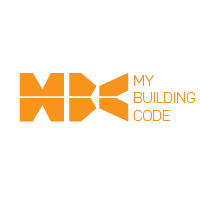If you’ve been in construction long enough you must have noticed some people, mostly older generation, measure in feet & inches while others, the younger generation, use meters (metric system). Why is this so?
The imperial and metric systems are two different measurement systems for length, area, volume and mass.
While the metric system is based on scaling where units are expressed in multiples (or fractions) of ten, the imperial system is more complex. The inch is divided into halves, quarters, eighths, etc. And there is no straightforward way to convert the imperial units e.g. there are 12 inches in a foot, three feet make a yard, five and a half yards are equal to a rod, four rods are a chain…..etc
The metric system, also known as the Système International (SI) is the most common measurement system worldwide. Having a standard unit of measurement is important so that everyone can understand each other. Only 3 countries have yet to adopt the metric system namely: The United States, Liberia and Myanmar. The US is the only industrialized nation that does not mainly use the metric system in its commercial and standards activities. The UK is a bit of a weird one, as it’s a mixture of measurements that are used. For example, most measurements are done in the metric system. But distances are measured in miles and speedometers in cars use miles per hour.
Historically, the imperial system was the official weights and measurement system used in Great Britain and other Commonwealth countries. The United States Customary System (USCS) was based on the British Imperial System.
France was the first country officially adopted the metric system in 1800s. Most countries converted (known as the metrication) in the ’70s and ’80s.
Kenya changed to the metric system in 1969. The International System of Units (SI) is the only legal system of Weights and Measures in Kenya. All weighing and measuring instruments are required by law to be tested for accuracy and stamped by the Inspectors of Weights and Measures before they are sold or brought into trade use and thereafter once every year.
The Imperial system of weights and measures although considered now to be obsolete still has an influence on the built environment, as buildings and infrastructure constructed prior to 1970 (and those still being built in the USA) were built to the tenets of a system that used feet and inches instead of meters.
Even today we still have remnants of the imperial system with us where you have estate agents selling land in acres (imperial unit) while surveyors work in hectares (metric unit). This is why your title deed will indicate the size in hectares (ha).







